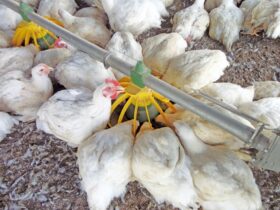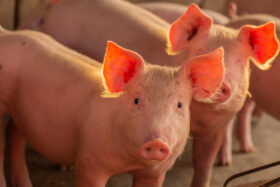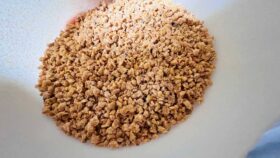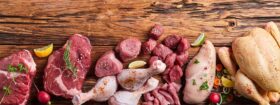Distiller’s dried grains are produced by condensing and drying the stillage left over after starch-fermentation of corn for ethanol production. Solubles left over from the process are usually added before drying, resulting in the DDGS product that has become more and more commonplace in poultry feed formulations.
Historically, this ingredient was used in ruminant diets, as the nutrient content and quality of DDGS is considered to be somewhat variable – not only between, but also within production facilities. However, recent improvements in processing technologies and quality control systems have resulted in more consistent, higher-quality feed products.
Furthermore, newer fractionation processes continue to be implemented by some ethanol plants that are capable of fractioning out protein, fiber and oil portions of the grain, either pre- or post-fermentation, providing a wide variety of co-products which will result from the blending of these fraction streams.
Why is there more danger of oxidative damage today?
A decade ago, typical poultry diets consisted of far fewer feed ingredients than some of today’s rations. Additionally, the use of further-processed by-product meals and fats has also increased due to economic constraints associated with some raw ingredients.
This has created a diet which is highly prone to oxidative degeneration due to the higher rate of thermal, and in some cases, chemical processing of feed ingredients such as DDGS.
Currently, it is not uncommon to see DDGS inclusion rates between 5 and 12% in broiler and turkey diets, depending on bird age and feed prices.
One factor to consider when utilizing DDGS at such levels is the increase in polyunsaturated fatty acid content relative to saturated fatty acids that results from the addition of the 18:2, n-6 -rich corn oil which comprises approximately 10% of most DDGS.
Despite the fact that most modern rations have decreased the total lipid content in recent years, overall increases in the use of vegetable-based by-products invariably change the fatty acid profile of the diet to one which contains higher levels of polyunsaturated fats relative to saturated fats.
Polyunsaturated fatty acids are highly sensitive to oxidation during storage and are likely to turn rancid at high environmental temperatures. The oxidation process involves the generation of fatty acid free radicals, which then react with molecular oxygen to produce peroxide free radicals. This results in a chemical change to the fatty acid which decreases nutrient value and often produces undesirable odor.
…And that’s why risk management of oxidative damage is essential
Oxidative damage in feeds entails economic losses because of the negative impact on feed quality through the transformation of the lipid fraction of feed ingredients, decreased animal growth rate and performance, and decreased meat quality parameters, such as nutritional value and shelf-life. Therefore, lipid stability in feed is important, particularly with regard to the oxidative rancidity that occurs in high-fat ingredients, and prevention and management of oxidative stress is critical.















